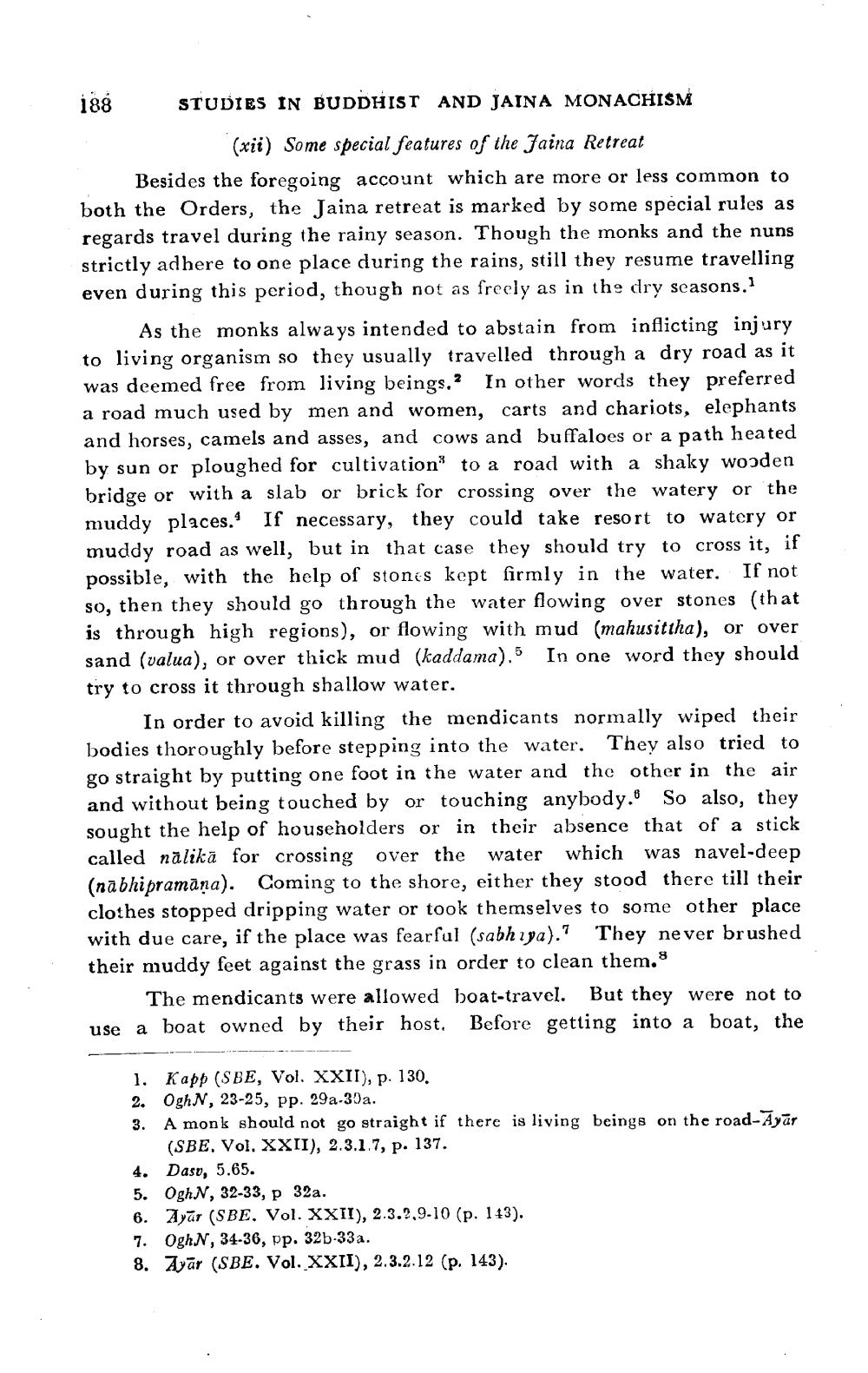________________
188
STUDIES IN BUDDHIST AND JAINA MONACHISM
(xii) Some special features of the Jaina Retreat
Besides the foregoing account which are more or less common to both the Orders, the Jaina retreat is marked by some special rules as regards travel during the rainy season. Though the monks and the nuns strictly adhere to one place during the rains, still they resume travelling even during this period, though not as freely as in the dry seasons.1
As the monks always intended to abstain from inflicting injury to living organism so they usually travelled through a dry road as it was deemed free from living beings. In other words they preferred a road much used by men and women, carts and chariots, elephants and horses, camels and asses, and cows and buffaloes or a path heated by sun or ploughed for cultivation to a road with a shaky wooden bridge or with a slab or brick for crossing over the watery or the muddy places. If necessary, they could take resort to watery or muddy road as well, but in that case they should try to cross it, if If not possible, with the help of stones kept firmly in the water. so, then they should go through the water flowing over stones (that is through high regions), or flowing with mud (mahusittha), or over sand (valua), or over thick mud (kaddama).5 In one word they should try to cross it through shallow water.
In order to avoid killing the mendicants normally wiped their bodies thoroughly before stepping into the water. They also tried to go straight by putting one foot in the water and the other in the air and without being touched by or touching anybody. So also, they sought the help of householders or in their absence that of a stick called nalika for crossing over the water which was navel-deep (nabhipramana). Coming to the shore, either they stood there till their clothes stopped dripping water or took themselves to some other place with due care, if the place was fearful (sabhiya). They never brushed their muddy feet against the grass in order to clean them.
7
The mendicants were allowed boat-travel. But they were not to use a boat owned by their host. Before getting into a boat, the
1. Kapp (SBE, Vol. XXII), p. 130.
2. OghN, 23-25, pp. 29a-30a.
3.
A monk should not go straight if there is living beings on the road-Ayar (SBE. Vol. XXII), 2.3.1.7, p. 137.
4. Dasv, 5.65.
5. OghN, 32-33, p 32a.
6. Ayar (SBE. Vol. XXII), 2.3.2.9-10 (p. 143).
7. OghN, 34-36, pp. 32b-33a.
8. Ayar (SBE. Vol. XXII), 2.3.2.12 (p. 143).




